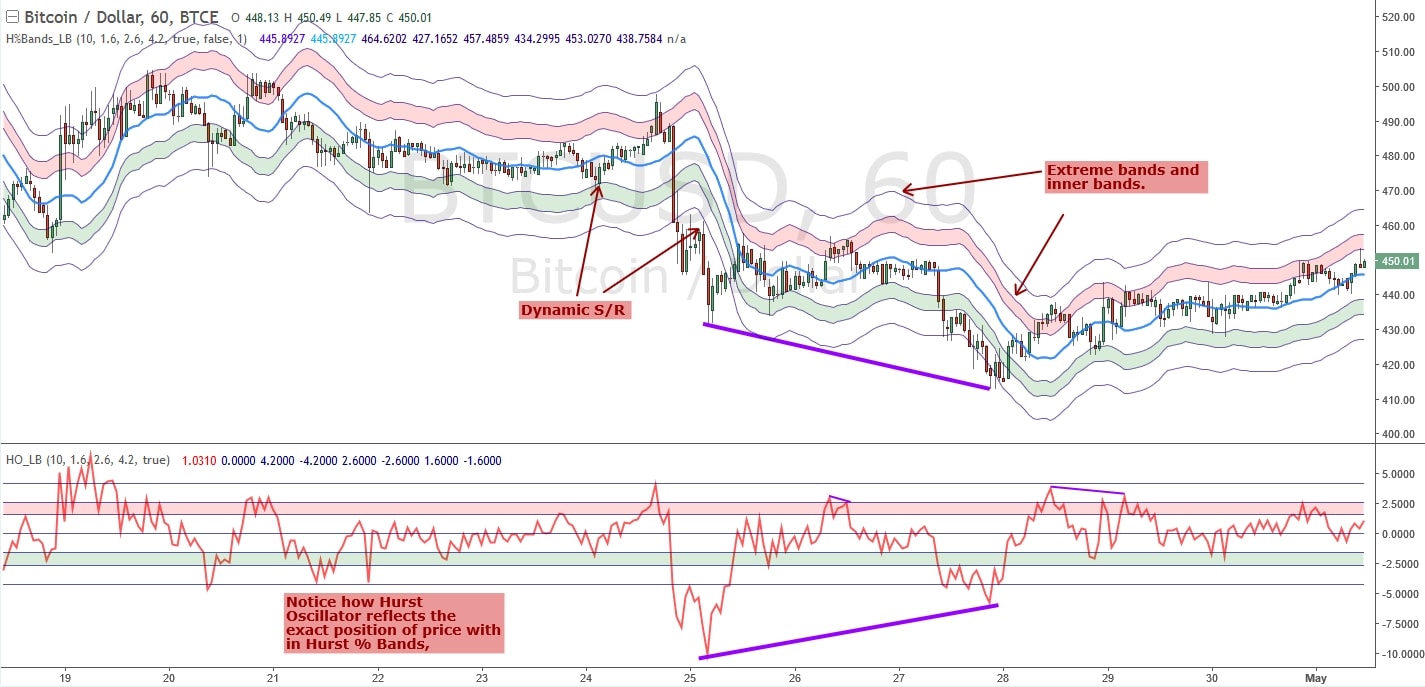Hurst Oscillator Indicator – A Tool Made by a Rocket Scientist
The Hurst Oscillator is another indicator based on the works of J.M Hurst, being that he was working on cycles it is not strange that the studies were later used to develop an oscillator. If you didn’t know, we have introduced Mr. Hurst before when we reviewed the Hurst Bands – J.M Hurst Indicator Review. He was a rocket scientist who in the ’70s and on a whim published a theory on cycle analysis in order to explain the movement of financial markets. So, are you eager to try some more rocket scientist technology?

J.M Hurst was a Rocket Scientist, the Hurst Oscillator is based on the long and thorough studies made by him and published in his book “The Magic of Stock Transaction”.
How does the Hurst Oscillator Work?
The Hurst Oscillator was created by studying “The Magic of Stock Transaction Timing” written by J-M Hurst – just like the Hurst Bands Indicator. It is a custom indicator and not widely used but one that works as well as any other. How it works is like the name implies, it’s an oscillator!
And just like an oscillator, the Hurst Oscillator will bounce from an extreme low to an extremely high or vice versa in order to point out oversold and overbought markets. I found this version of it coded by “LazyBear” for Tradingview. You can see a screenshot of it below. This is a great example since it is used together with the Hurst Bands I mentioned before.

Picture source: Tradingview.com. This picture above illustrates the Hurst Oscillator and Hurst Bands together. You can see the divergence between the price and the Oscillator.
Hurst Band and Oscillator combined make up a good strategy. Looking at the image above, we can notice how the oscillator moves up and down with the market. We can also notice an area (marked with trend lines) where price made lower lows but the Hurst Oscillator made higher lows. This is called divergence and it signals a trend shift. In this case, you can see that shortly after this divergence was identified, the price went from bearish to bullish.
Overall, it is pretty much like the Stochastic Oscillator and RSI, and it can help you make the same studies. Only you can be the judge of which one is better for you. I suggest you try it out together with a couple other Oscillators to see how it performs. For example, compare the RSI, Stochastic and Hurst Oscillator and see which one matches your strategy the best. Or, you can simply use it together with the Hurst Bands for more Hurst power.
Why does the Hurst Oscillator Suck?
It doesn’t but there is a problem; the fact that I had a hard time finding this indicator for MetaTrader which is what a lot of binary traders are using. After a period of searching, I could only find a download for it for TradingView but it is available on a number of other premium platforms.
Why doesn’t the Hurst Oscillator Suck?
It doesn’t suck because Oscillators, in general, are great tools for identifying anything from convergence to divergence to support and resistance strength. The methods used for the Hurst Oscillator area based on price action studies and it’s said that J.M Hurst made over 20,000 hours of computer studies on market behavior. The best part is that you can get the same analysis with other types of oscillators so it is no worry if you can’t find this one on the platforms you use for charting.
Oscillators are Awesome
Oscillators are awesome, they can help you trade the trend or signal reversal through divergence. They can also confirm support and resistance strength through convergence. Everyone can benefit from using an oscillator in their strategy. There are many types out there that you can try. Some may work better on Stocks rather than Currencies and some may be more suitable for long term traders than short term traders. So pick one up and start experimenting like a scientist!
Further Reading:
Hurst Bands – J.M. Hurst Indicator Review